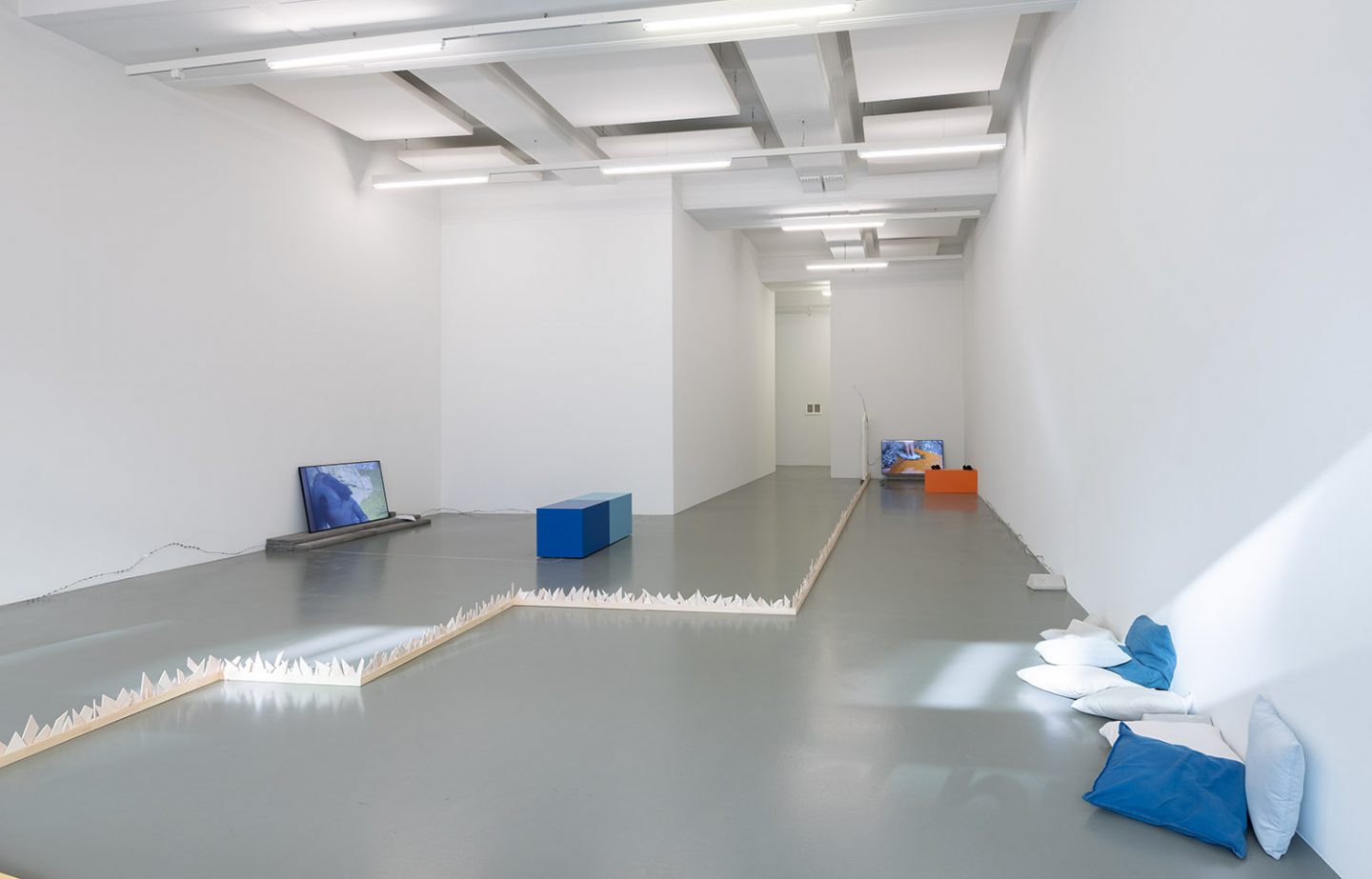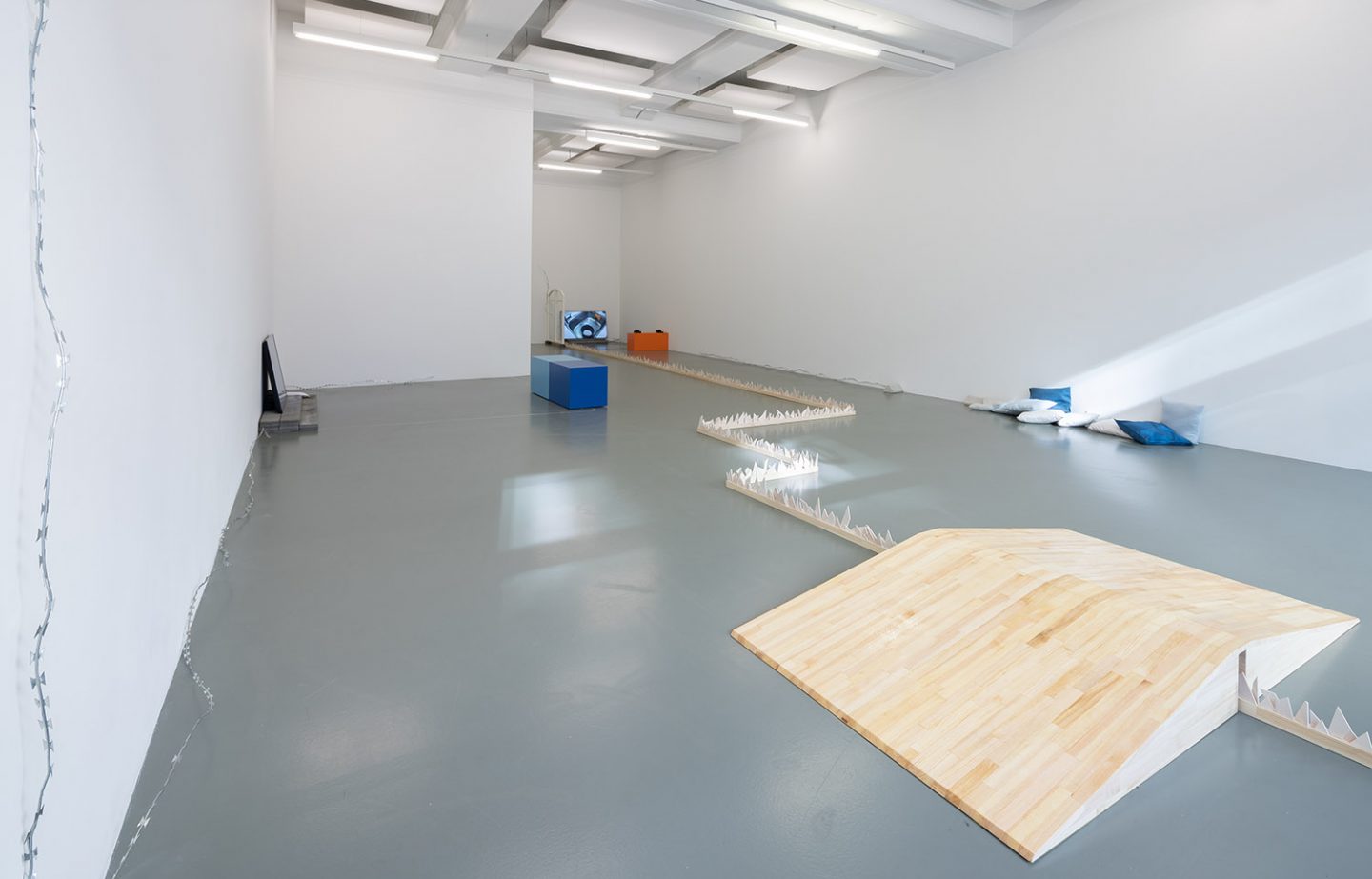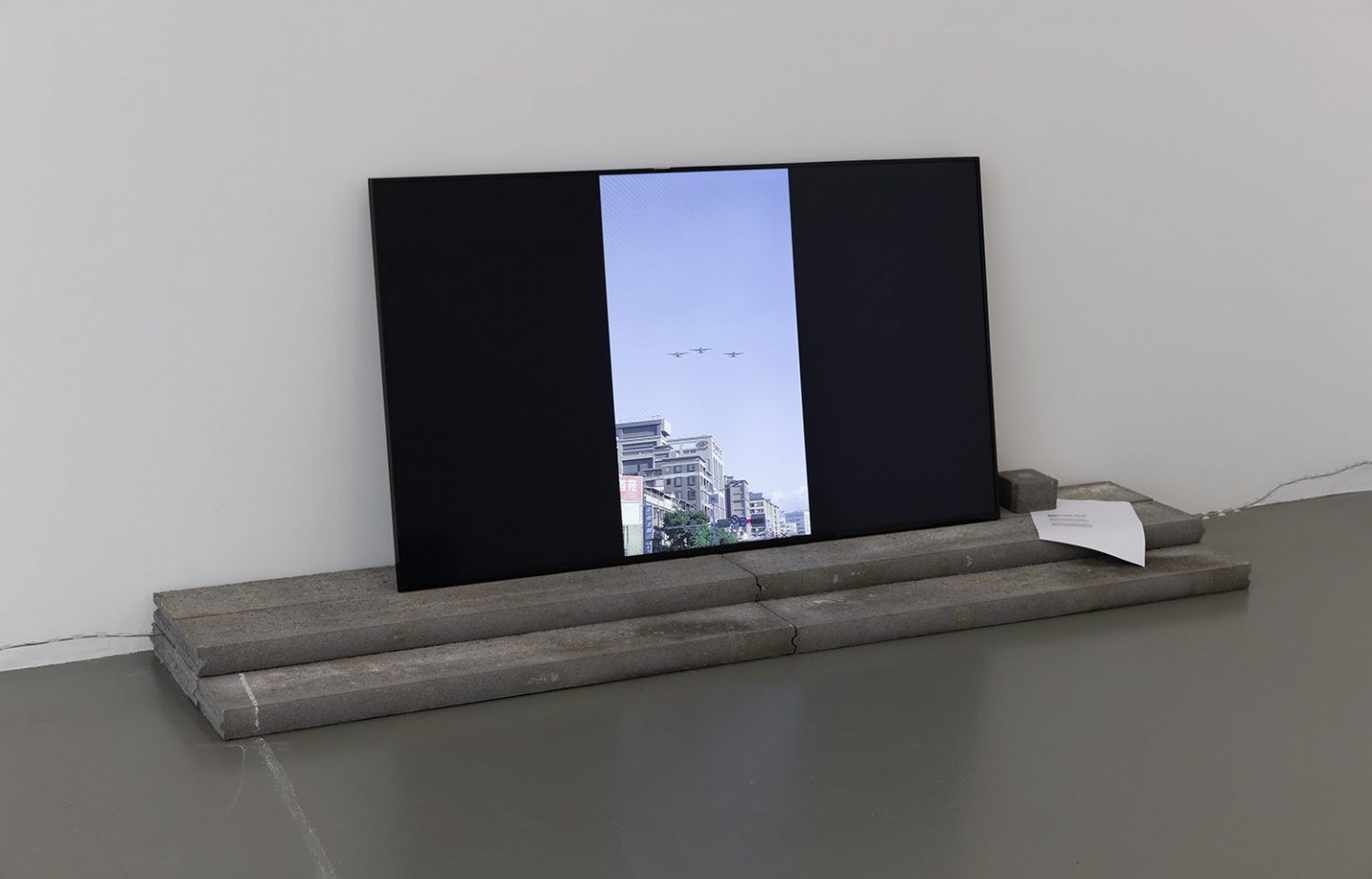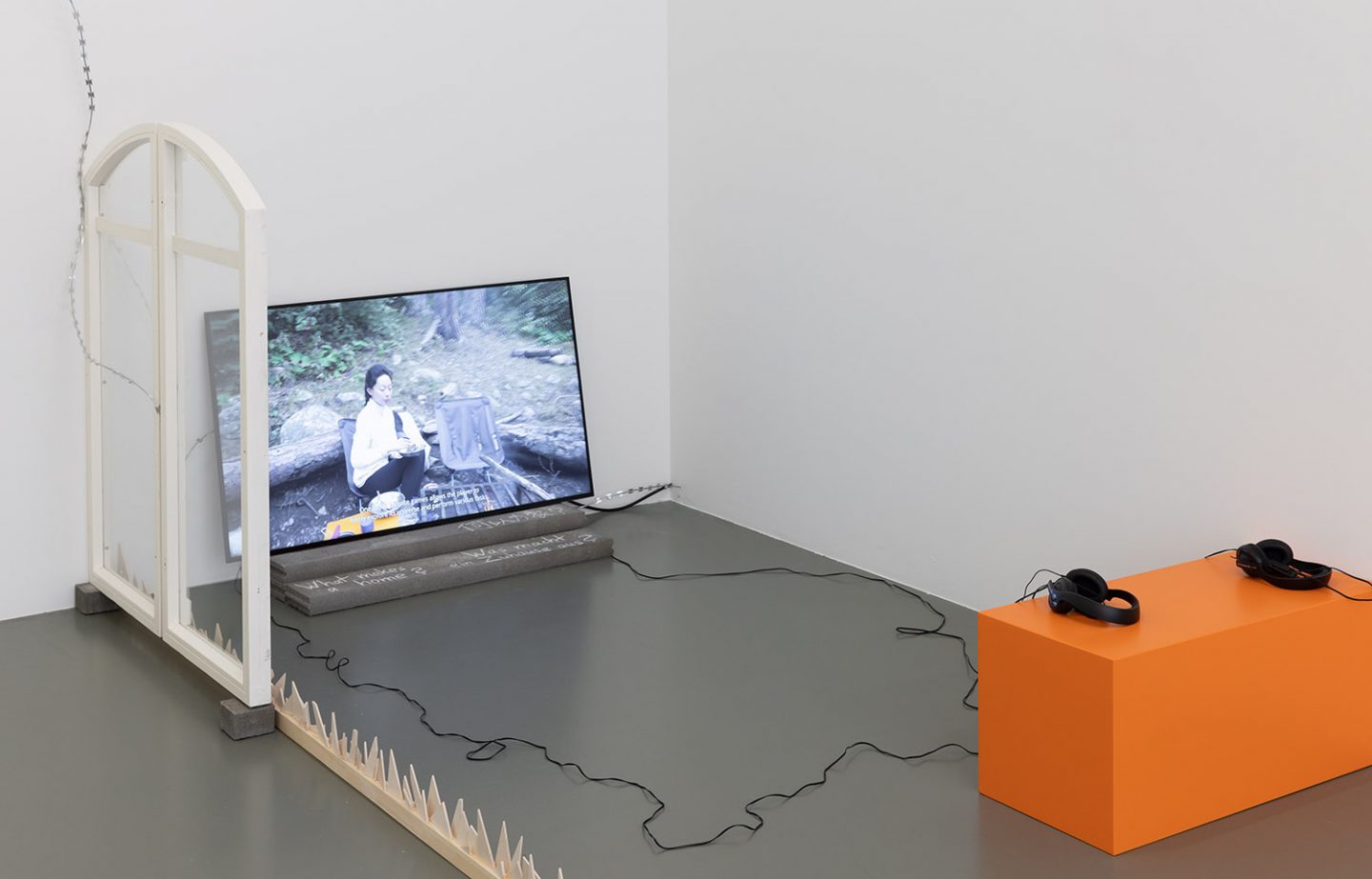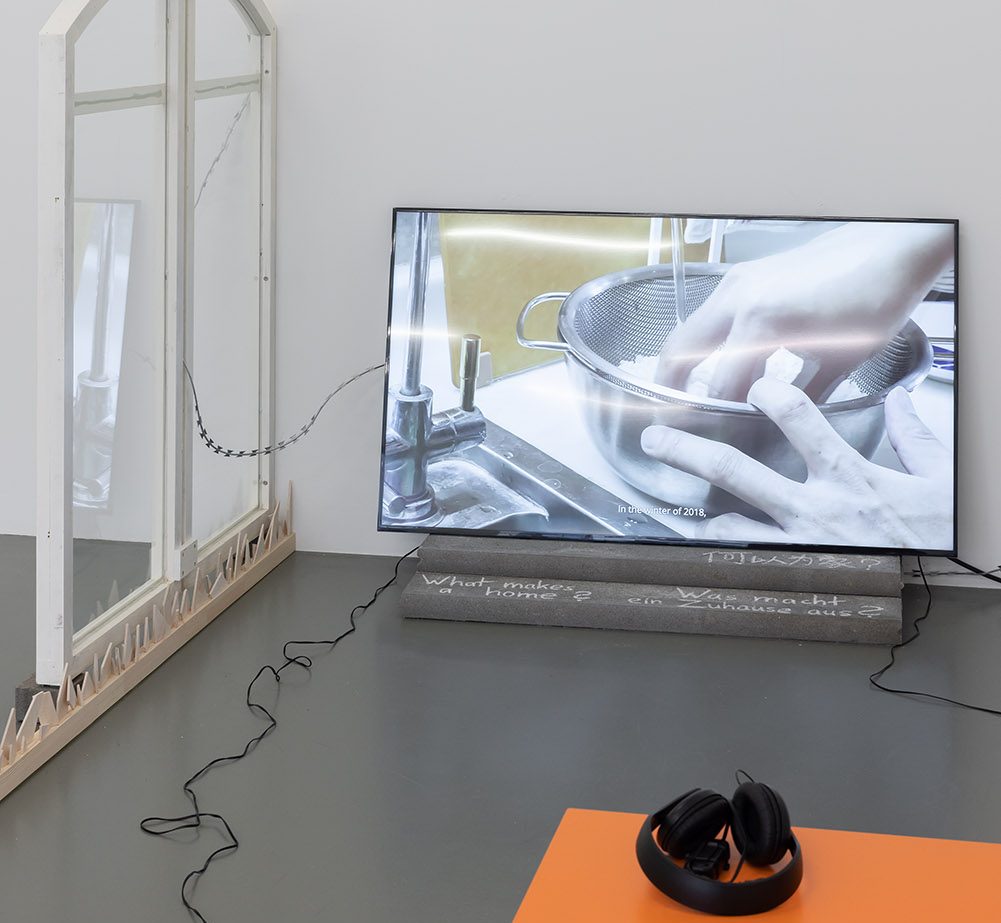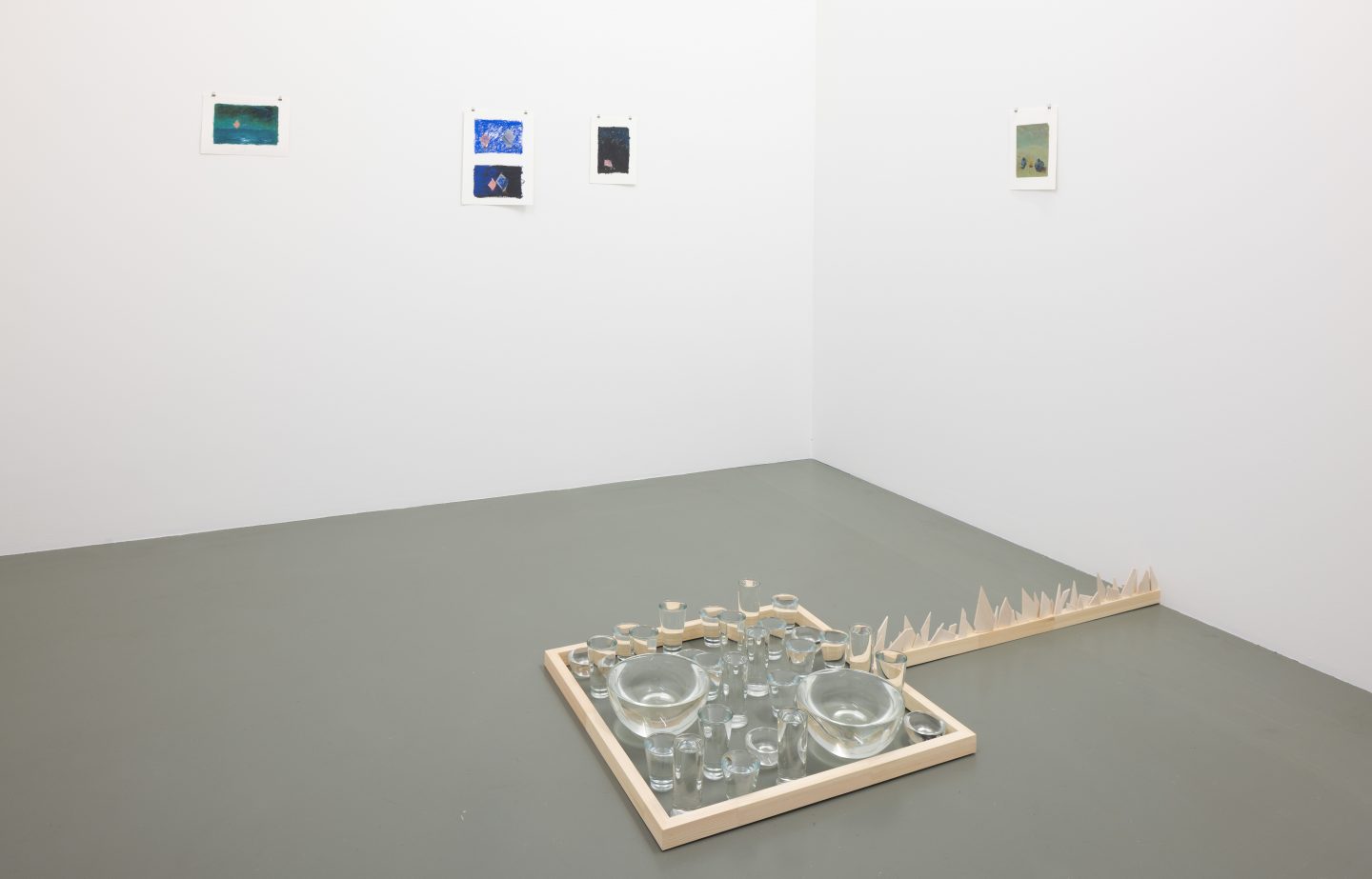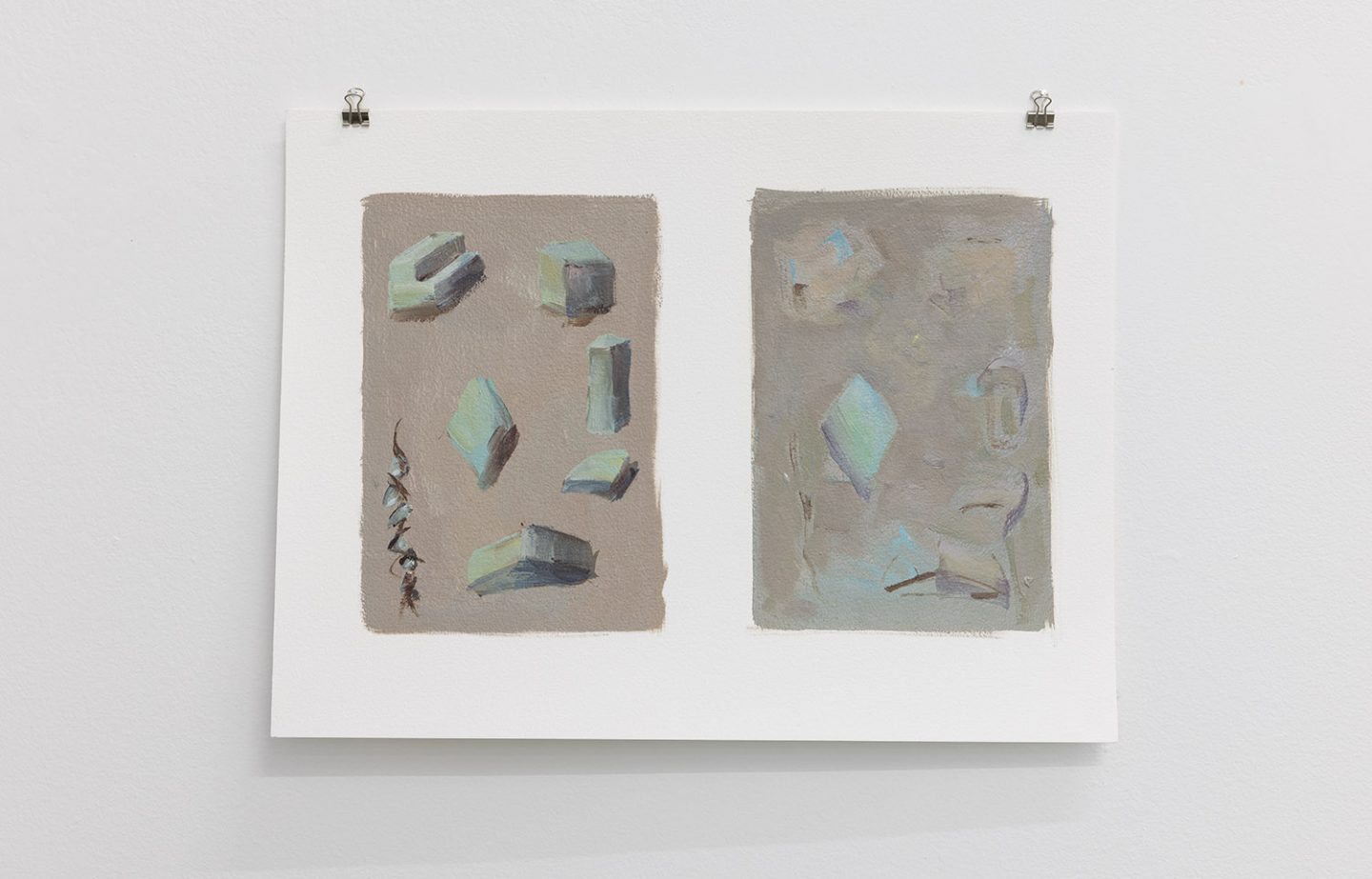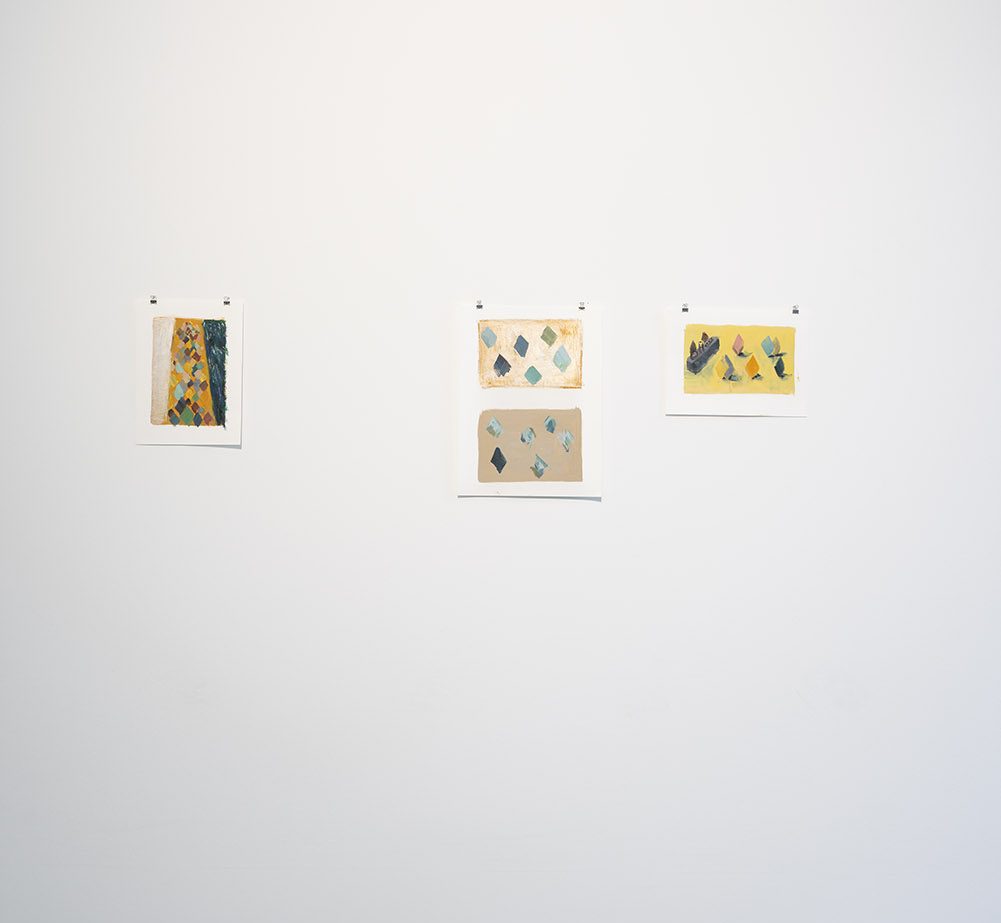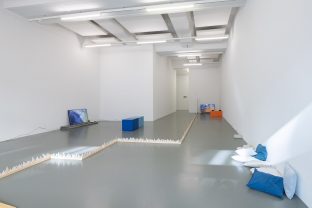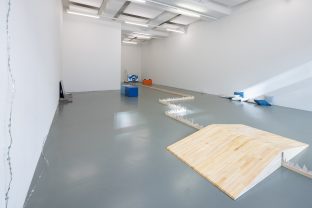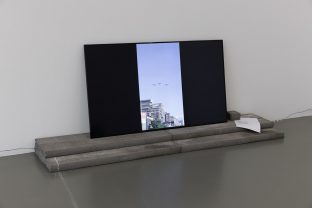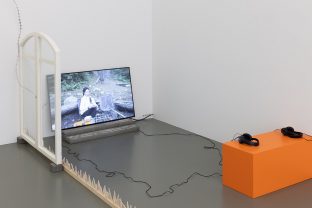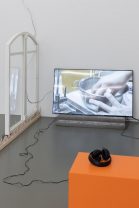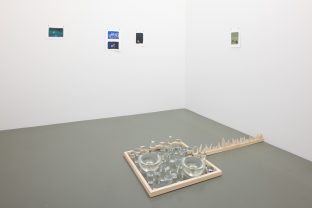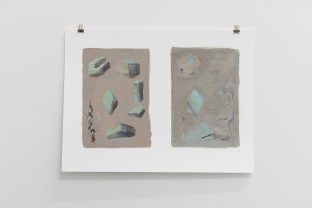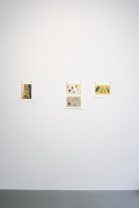楔 Xiē: 連接,嵌入,反射,承托 To bind, embed, shimmer, and brace
- daadgalerie
- Exhibition
With works by Hao Jingban
October 21st – December 18th, 2022
Opening times: Tuesday– Sunday, 12 – 19 h
Exhibition Opening: October 20th , 18 – 21 h
楔 Xiē (Wedge) is a collective comprising the artists Hao Jingban, Shen Xin, Yunyu “Ayo” Shih, and writer Qu Chang.
The group was formed in 2020, during Hao Jingban’s period of residence in Berlin, and grew out of fragmented online conversations about current social issues and global political events. Via chat messages and online discussions, topics such as the Black Lives Matter movement, the effects of the Covid-19 pandemic, the war in Ukraine, and the escalating tensions in Taiwan have been addressed. This ongoing exchange has resulted in joint readings, images, drawings, and videos.
The collective takes its name from the Chinese character 楔, which depicts a tree and a person cutting a wedge out from it. Similar to how a wedge is driven into a gap in order to (re-)establish a connection, stabilizing or opening something up in the process, discussion is intended to foster a productive environment for group collaboration in a period marked by global crises and social upheavals. The central theme of the group’s joint reflections is the significance of the home in times of enforced isolation.
At the daadgalerie, 楔 Xiē’s creative engagement with topical issues from the present is transformed into an expansive installation, which also includes video works and selected drawings. The accompanying brochure provides an expanded space in which to visualize the collective dialogue.
We recommend wearing an FFP2 mask.
daadgalerie
exhibition booklet
floorplan and list of works
Hao Jingban works with film and video to investigate the historical distance between the present viewer and a certain era in the past. In her research-based practice, the artist conducts historical investigation, archival research, field study, personal interviews, and live performances. From the ballroom dancing in Beijing before and after the Cultural Revolution, to the films of North-eastern China from the 1930s, the artist weaves together complex historical narratives, social movements and cultural commentary against the ambivalence and silence of the bygone era. Hao’s solo exhibitions include “Hao Jingban: Opus One” (Matadero Madrid, Madrid, Spain, 2020); “Silent Speech” (OCAT Xi’an, Xi’an, China, 2019); “New Directions: Hao Jingban” (Ullens Center for Contemporary Art, Beijing, China, 2016); and “Over-Romanticism” (Taikang Space, Beijing, China, 2016). Her works have been exhibited in institutions and biennales, including Rockbund Art Museum (Shanghai, 2019); Guangdong Times Museum (Guangzhou, 2018 & 2019); Centre Pompidou (Paris, 2017 & 2019); Museum of Fine Arts (Boston, 2018); 11th Shanghai Biennale (Shanghai, 2016); Kuandu Museum of Fine Art (Taipei, 2016); Museum of Contemporary Art (Hiroshima, 2016); Minsheng Art Museum (Beijing, 2015); and Jewish Museum (New York, 2014). Prizes and awards include the International Critics’ Prize at the 63rd Internationale Kurzfilmtage Oberhausen (2017), and the Han Nefkens Foundation – ArcoMadrid Video Art Award (2019). In 2020 she was a fellow of the DAAD Artists-in-Berlin Program.
Qu Chang is a Hong Kong and Shenzhen-based curator and writer contributing to journals such as Artforum, Ocula, and Yishu. Qu is currently a student of the Cultural Studies PhD program at Lingnan University, Hong Kong. Prior to that, she worked as Curator at Para Site. Her recent curatorial projects include Sea Breeze (2019, Jogja Biennale, co-curated with Cosmin Costinas), Café do Brasil (2019, Para Site), Doreen Chan: Hard Cream (2019, HB Station), Crush (2018, Para Site), among others.
Shen Xin practices empowering alternative histories, relations, and potentials between individuals and nation-states. Their interests lie in understanding culture on its own terms. Seeing it as an active commitment to the learning, teaching and engaging with relating to places as land, it opens up to inhabiting the multitudes of the selves through the lens of time. Engaged with moving image, video installation, public event and collective process, Shen Xin imagines and creates affirmative spaces of belonging that embrace polyphonic narratives and identities. Their solo presentations include ས་གཞི་སྔོན་པོ་འགྱུར། (The Earth Turned Green) (Swiss Institute, New York, 2022), Brine Lake (A New Body) (Walker Art Center, Minneapolis, 2021), Double Feature (Schirn Kunsthalle Frankfurt, 2019), Synthetic Types (Stedelijk Museum, 2019), To Satiate (MadeIn Gallery, Shanghai, 2019), Warm Spell (ICA, London, 2018), and half-sung, half-spoken (Serpentine Galleries, London, 2017). Their group exhibitions include Language is a River (MUMA, Melbourne, 2021), Minds Rising, Spirits Tuning (Gwangju Biennale, 2021), Sigg Prize (M+ Museum, Hong Kong, 2019), Afterimage (Lisson Gallery, London, 2019), and Songs for Sabotage (New Museum Triennial, New York, 2018). They received the BALTIC Artists’ Award (2017) and held the Rijksakademie residency in Amsterdam (2018-19). Shen Xin practices on Miní Sóta Makhóčhe, the land of the Dakhóta Oyáte, as well as on Lënapehòkink (New York City), the land of the Lenape peoples.
Yunyu Ayo Shih currently lives and works in Taipei. He graduated from National Taiwan University with a BA in History and the School of The Art Institute of Chicago with an MFA in Sculpture. He frequently explores different appearances of memorial and memory while at the same time involving interactions between himself and state apparatus. Instead of posing a confrontational gesture, he tends to choose coexistent or penetrated attitudes to explore gray areas. Shih’s work has been exhibited at Taipei Fine Art Museum, MoNTUE Taipei, Para Site, Time Museum, Power Station Art Museum in Shanghai, Taipei Contemporary Art Center, Practice Space (NY), 4-18 Space(Bogota), Cultural Center Belgrade and many other space. He has been the recipient of the New Artist Society Award, Taiwan National Cultural Affair Grant, and The National Culture and Arts Foundation Award, and has participated in the Skowhegan School of Painting and Sculpture of 2014. He is also one of the founders of HIDE & SEEK AUDIOVISUAL ART, a collective focusing on public education projects established by contemporary artists, anthropologists, museologists, historians, film researchers and visual designers since 2017.
-
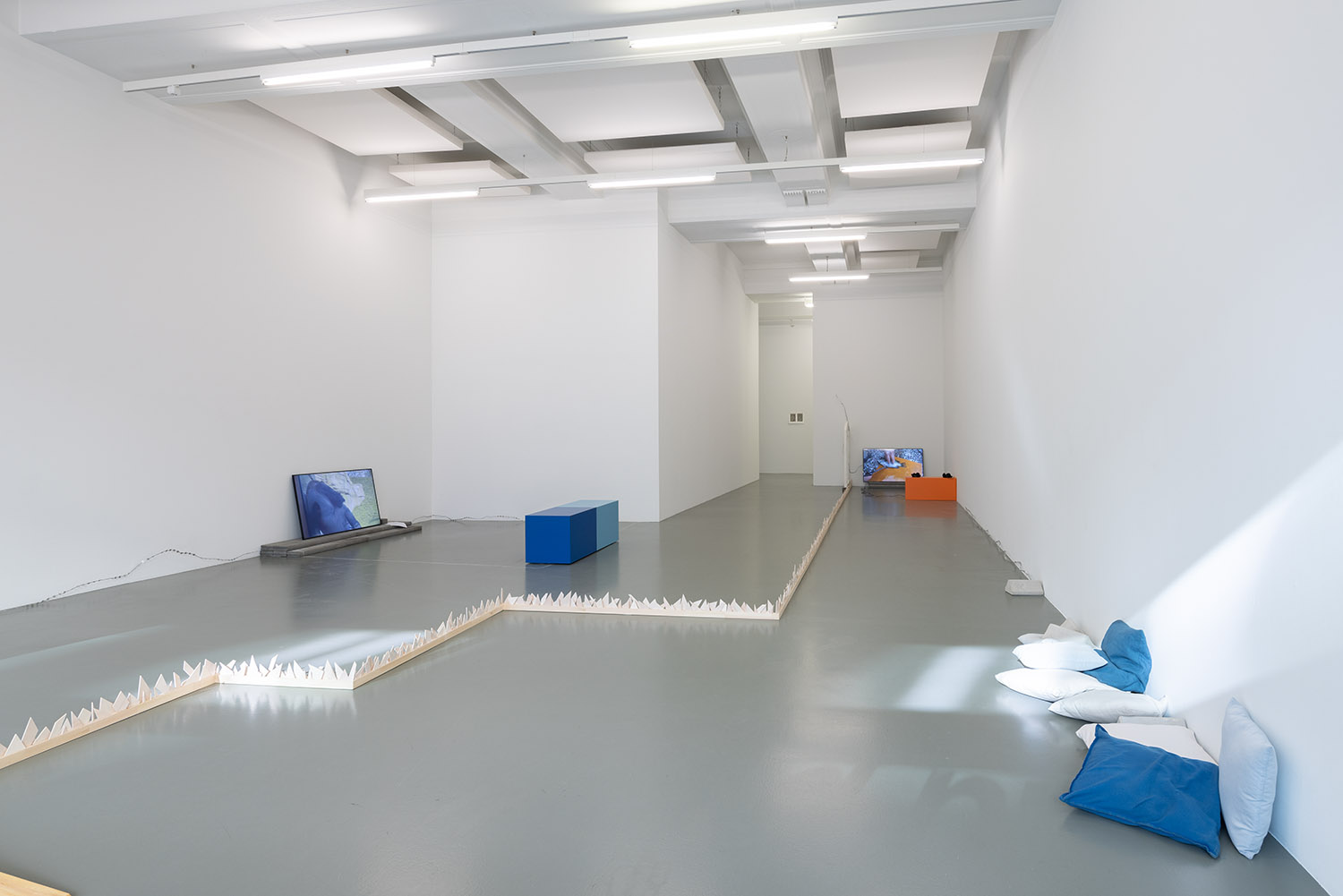
Installation view 楔 Xiē: 連接,嵌入,反射,承托 To bind, embed, shimmer, and brace, 2022; Photo: Thomas Bruns
-
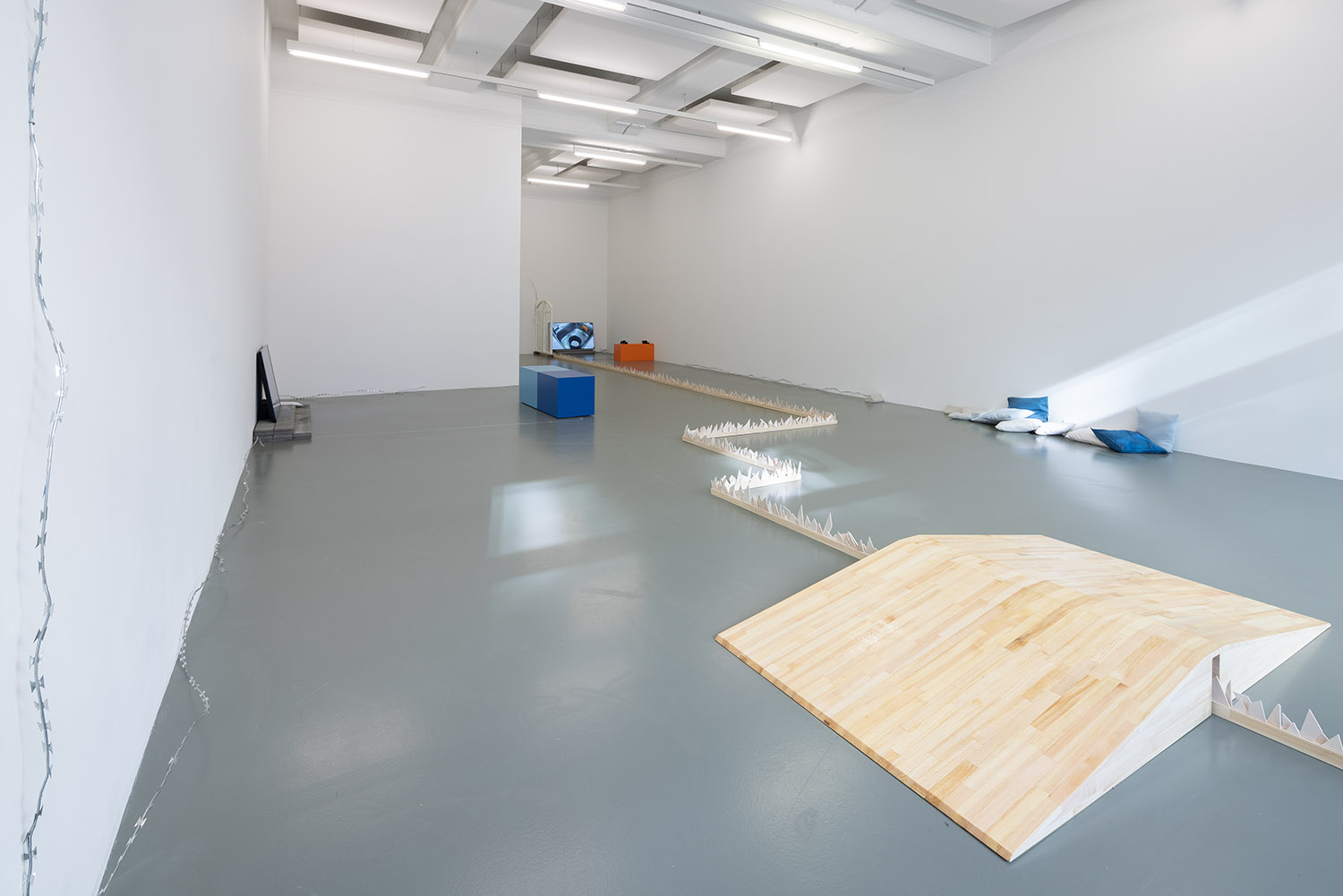
Installation view 楔 Xiē: 連接,嵌入,反射,承托 To bind, embed, shimmer, and brace, 2022; Photo: Thomas Bruns
-
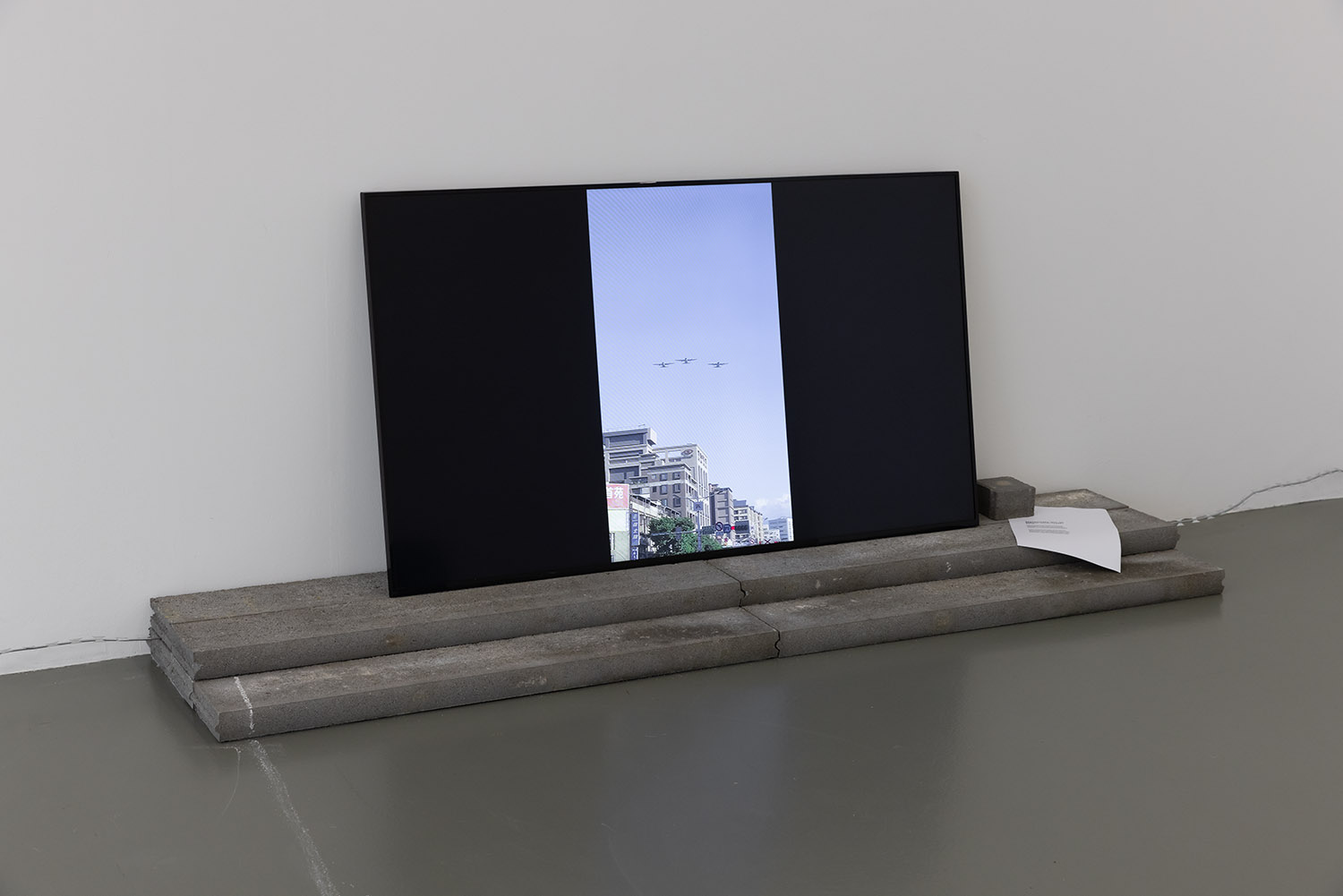
Installation view 楔 Xiē: 連接,嵌入,反射,承托 To bind, embed, shimmer, and brace, 2022; Photo: Thomas Bruns
-
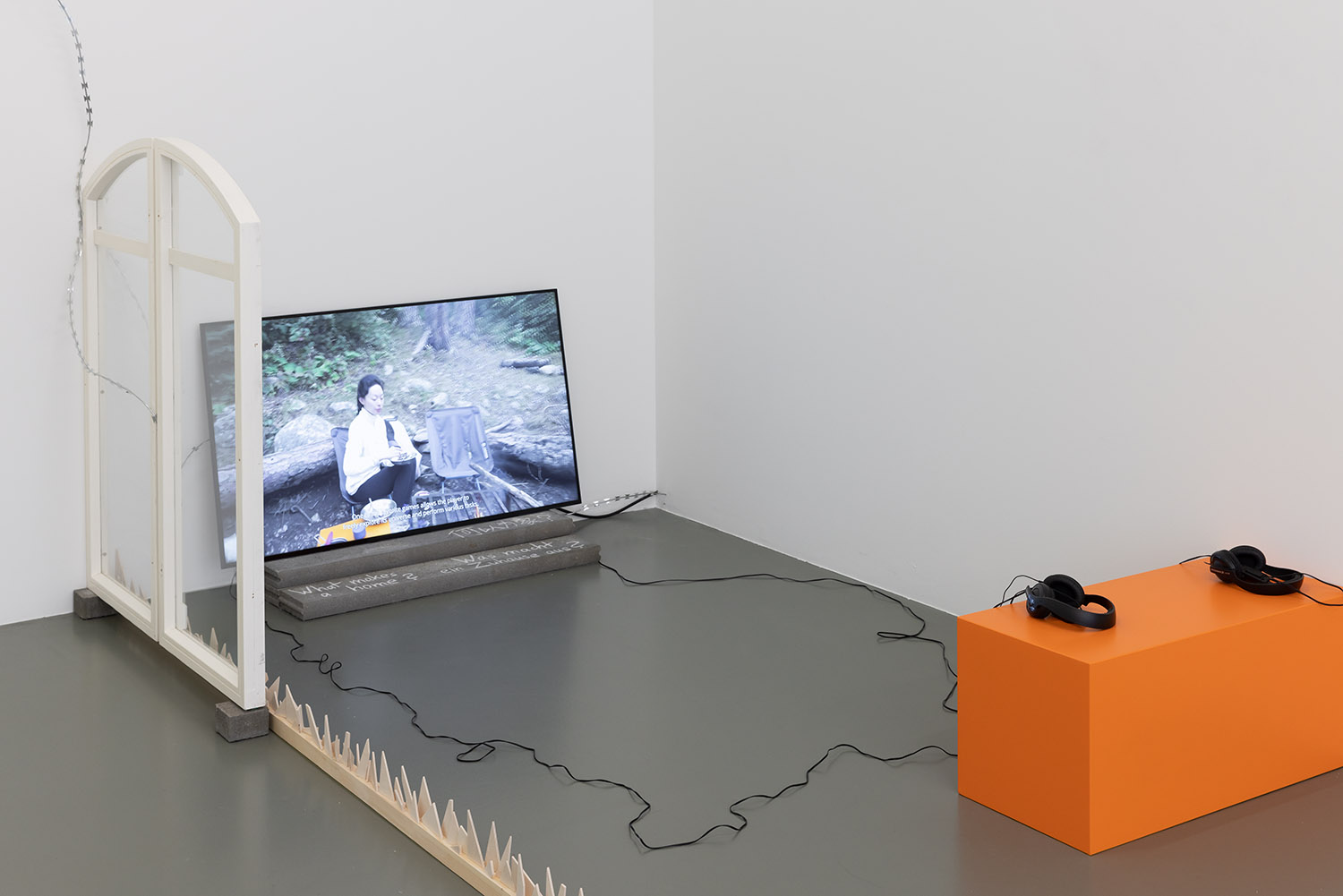
Installation view 楔 Xiē: 連接,嵌入,反射,承托 To bind, embed, shimmer, and brace, 2022; Photo: Thomas Bruns
-
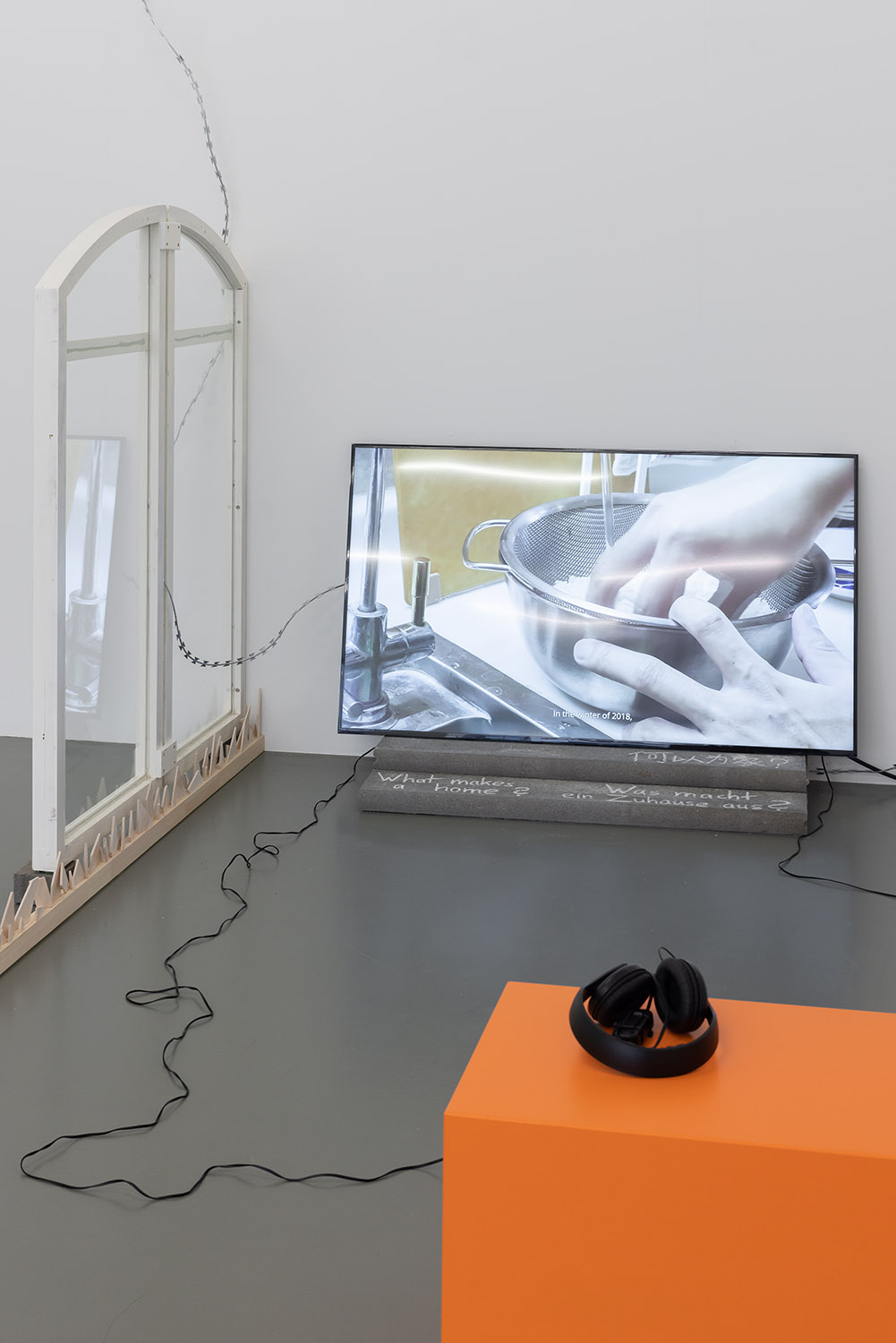
Installation view 楔 Xiē: 連接,嵌入,反射,承托 To bind, embed, shimmer, and brace, 2022; Photo: Thomas Bruns
-
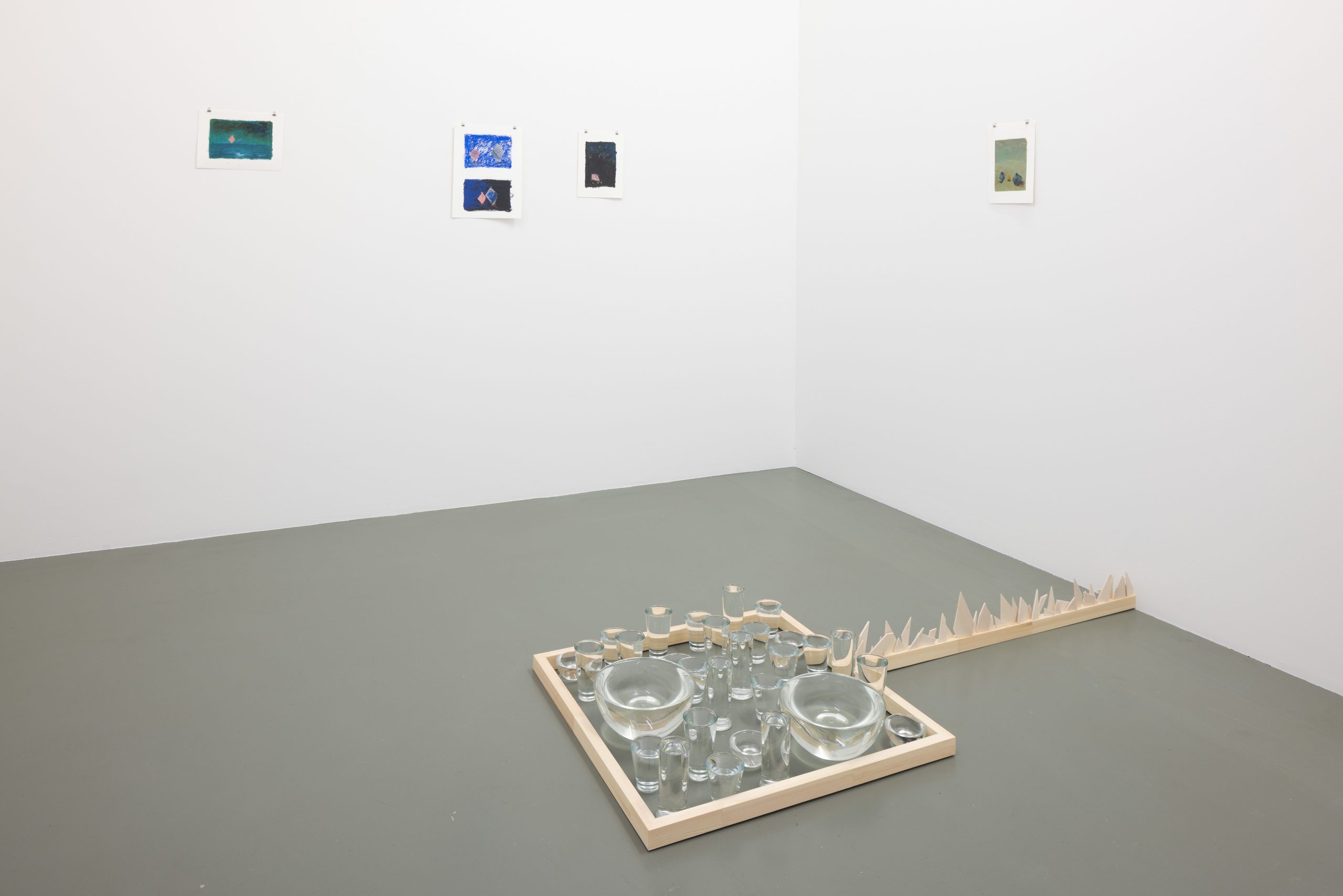
Installation view 楔 Xiē: 連接,嵌入,反射,承托 To bind, embed, shimmer, and brace, 2022; Photo: Thomas Bruns
-
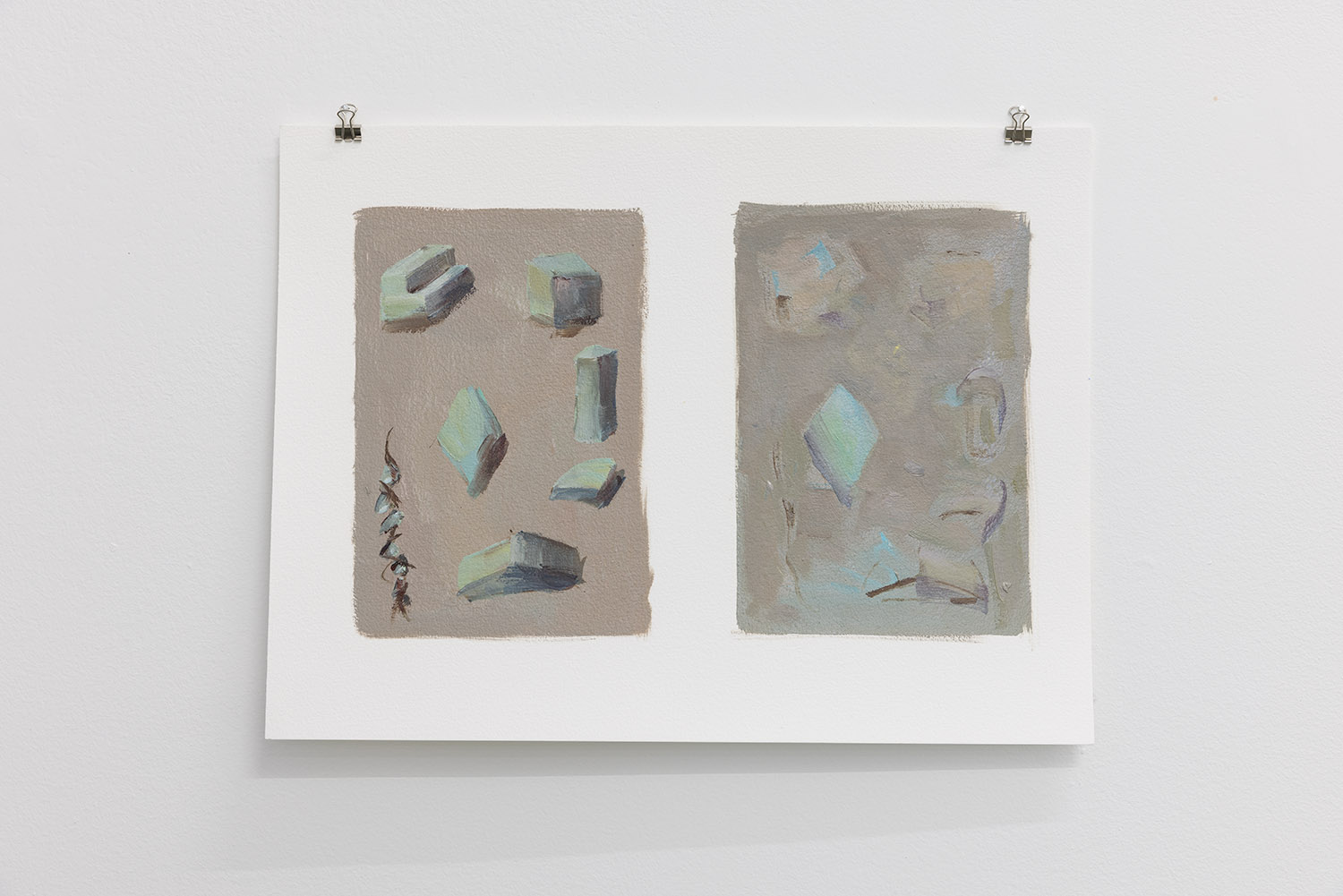
Installation view 楔 Xiē: 連接,嵌入,反射,承托 To bind, embed, shimmer, and brace, 2022; Photo: Thomas Bruns
-
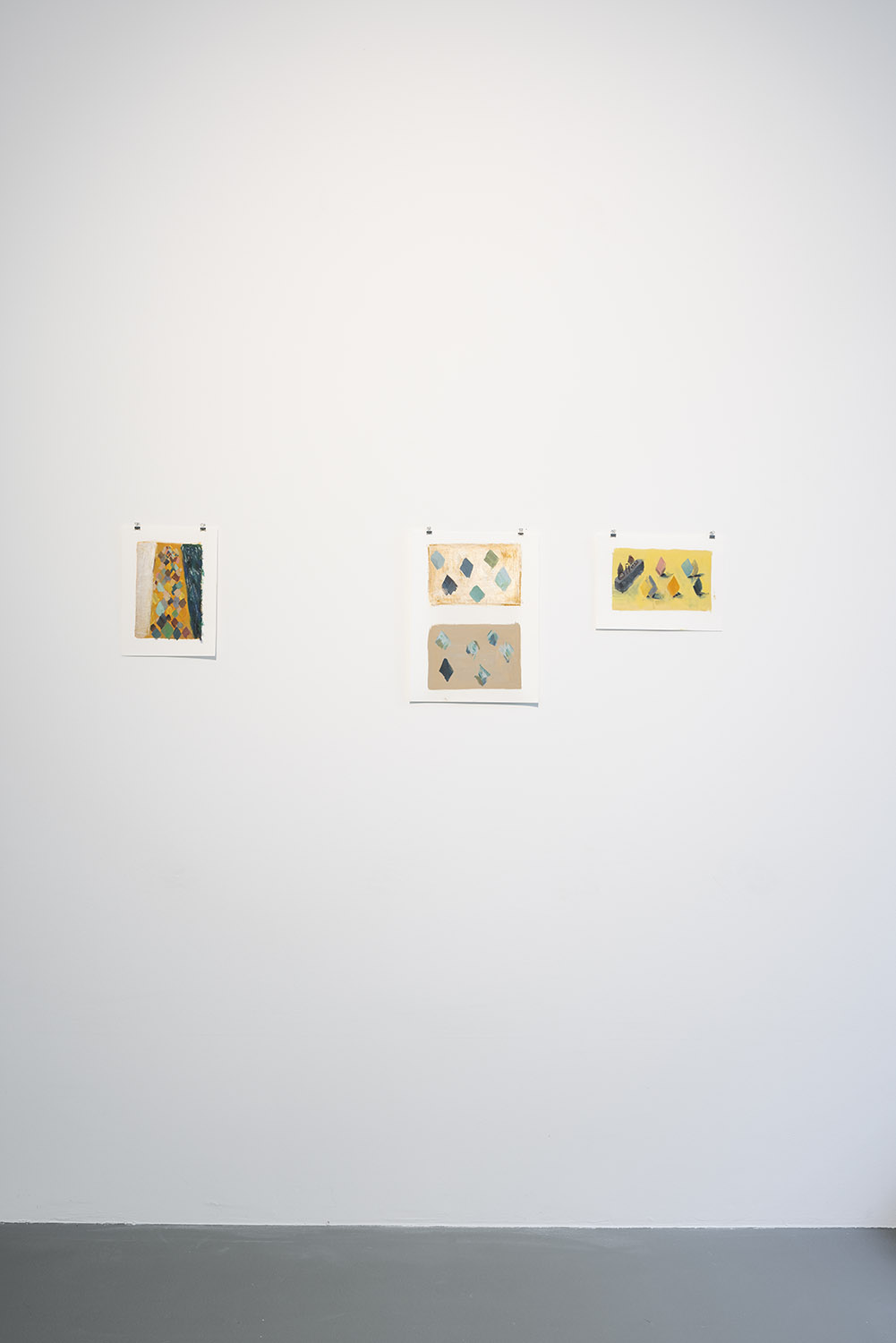
Installation view 楔 Xiē: 連接,嵌入,反射,承托 To bind, embed, shimmer, and brace, 2022; Photo: Thomas Bruns


